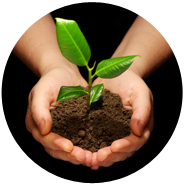What has DRI done for you lately? Just Ask a Homeowner in New Orleans’ Ninth Ward
Daniel Mikulsky.
I have an answer to the question that has been floated by the naysayers in our industry. Over 40 DRI certified business continuity planners left the Roosevelt Hotel in New Orleans at 7:00 a.m. on a Saturday morning in May; the day before the DRI2012 conference. We rode in our bus towards New Orleans’s Ninth Ward with our new DRI Foundation t- shirts, a water bottle, and a bit of apprehension about a day of work ahead. Most of us who spend our work days with e-mail, teleconferences and meetings, were now going to do some real work; the real work of recovery under the hot sun at a Habitat for Humanity work site.
It’s been seven years since Hurricane Katrina did her damage to New Orleans and the Gulf Coast. The city has bounced back. The economy is vibrant, and southern hospitality in The Big Easy is welcoming to tourists and visitors. That week you could take the Canal Street trolley car to another “Bayou Boogaloo” in City Park, off of Jefferson Davis Boulevard. Cajun music filled the air from three stages; easy and nice for resting under the shade trees by day and a foot-stomping hoedown on portable dance floors for the evening. Marching Dixieland jazz bands mixed with local craftsmen. An appetite worked up from kayaking in the park bayou could be satiated from caldrons full of lips smacking spicy jambalaya.
As we pulled up to the job site, the lingering effects of Katrina became visual. The Ninth Ward is clean, clear of debris with shade trees healthy and growing. Yet, while the city and nature has recovered, many homeowners have not. Approximately 50 percent of the homes near the work site neighborhood were still boarded up and abandoned; exhibiting the infamous “X” markings of search and rescue teams from seven years ago. Electrical lines to these homes are cut, and some abandoned homes are nearly engulfed by crawling vines and vegetation. Nine days previous to our arrival, our job site was bare ground. Now, the foundation was poured and the framing, windows, subflooring, and exterior insulation was in. This 1500-square-foot home was already taking shape. Our jobs for the day were to start the roofing, put up exterior siding, and framing interior walls.
It is amazing how forty strangers found work and meaningful tasks that day. There is something about business continuity and disaster recovery professionals that enable them to identify the gaps in a plan, and immediately fill them. Everyone found a group with which to work. I gravitated towards the ladder to measure and then nail in the siding, using wood block templates as a guide. Total strangers became trusted workmates, as they cut the siding boards and handed them up to me. It’s a good thing Habitat requires hard hats on a job site, since I only dropped my hammer about a dozen times. My workmates happily handed the hammer back to me; although I think I noticed the tally they were keeping with hash marks on a scrap of siding!
I had the privilege of working alongside the homeowner, as we nailed in the siding. He’s a quiet, hard-working man; delaying his retirement so that his two sons can graduate from college and have a better life. Here he was with me, putting in his 325 sweat equity hours of labor to build his house, with neighborly help from the certified business continuity and disaster recovery professionals of DRI. He would have to take a mortgage to pay the cost of land and materials, but after seven long years a home was becoming a reality.
The team had plenty of hydration breaks, and shared our stories over a lunch featuring po’ boy sandwiches in the shade of the neighboring house; still abandoned and still marked with “X”. We were all business continuity planners from financial services, health care and technology providers. We were from across the US, Canada, China, and Colombia. We started the day as professional colleagues, but ended it as friends and trusted workmates. We took a group photo at the end of the day that the homeowner says will hang in his new home. It’s an enduring legacy of recovery. I am sure the homeowner never heard of DRI before that day, but that he would never forget us when we left.
So, what has DRI done for you lately? Don’t just ask the Ninth Ward homeowner, but ask the people at New Orleans’ Second Harvest. While we were laboring under the hot sun, 20 others thought they had the plum job of sorting food at this food bank. Guess what, no air conditioning! Well, I heard giggles and stories of “Lucy and Ethel” like antics as they tried to keep pace with the food coming down the sorting conveyor. The sorting brigade completed their work so that everything was done, and food found its way to the needy.
So what has DRI done for you lately? It’s more than just sweat and work. The DRI Foundation paid the $25 per person registration fee with Habitat for Humanity so that we could have the privilege of work. Seven years after the catastrophe, donations have trickled
down, and there are not enough funds to pay for insurance, procure tools and materials, and keep the pace of rebuilding active. Both houses adjacent to our Ninth Ward homeowner are still abandoned. Recovery is needed until New Orleans reaches that state of normalcy.
So, what has DRI done for me lately? Well, business continuity and disaster recovery planning is now real. Risk analysis, BIAs, DRPs, and testing are all necessary for a recoverable organization; yet our profession remains abstract. Our profession is absolutely necessary towards building a resilient society. Yet, watch the haze appear in the eyes of family and friends when you explain exactly what you do for a living. Now I can do my work in the context of real recovery. DRI provides me education and certification in my profession, but now balances the advantage of my work with sunburn and blisters to keep me grounded. I treasure my certification and my blisters together. They make me a total person, and contribute to the moral justification for business continuity. Through DRI and the DRI Foundation, we do our work in business continuity planning, and help those impacted by disaster, because it is the right thing to do.
Daniel Mikulsky is a Business Continuity Professional with over 20 years in Business Continuity and Disaster Recovery Planning. He is certified by the Disaster Recovery Institute (DRI) as a Master Business Continuity Planner (MBCP). He is a writer and featured speaker for the profession, and a consummate mentor and instructor for Business Continuity Planners that seek certification and professional growth in their craft.
Thank you to our Volunteers
The DRI Foundation would like to thank the following certified professionals for participating in DRI Volunteer Day 2012.
| Mark Ackerman
Joe Arel Clyde Berger Lorraine Berger Alan Berman Bruno Canepa Robert Casavant Chloe Demrovsky Penny Dorr Carlos Escobar Monica Fedor Julie Fettig Thomas Gaitley R. Scott Gillespie Luis Gomez Sandra Griffith Wayne Jacobs Fritz Jeffries Jocelyn Jones Susanne Mackinnon Daniel Mikulsky David Morgan Doreen Myers Sabrena Newsom Dan Newton |
Traci O’Neal
Tom Pittler Anthony Pizzitola Peter Renneker Susan Rogers Fred Sebren Raymond Seid Amit Shah Melissa Smith Annemarie Staley David Stowe Rebecca Summerville Joyce Thacker Melinda Tolar Christina Tomlinson Michele Turner Tonya Wilbur Russell Wooldridge Jeffrey Yu |















